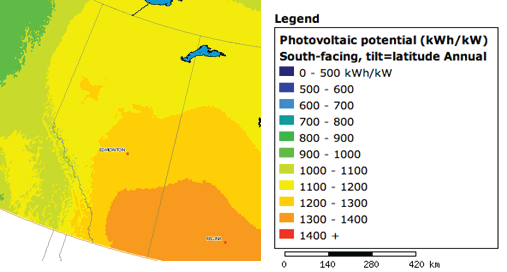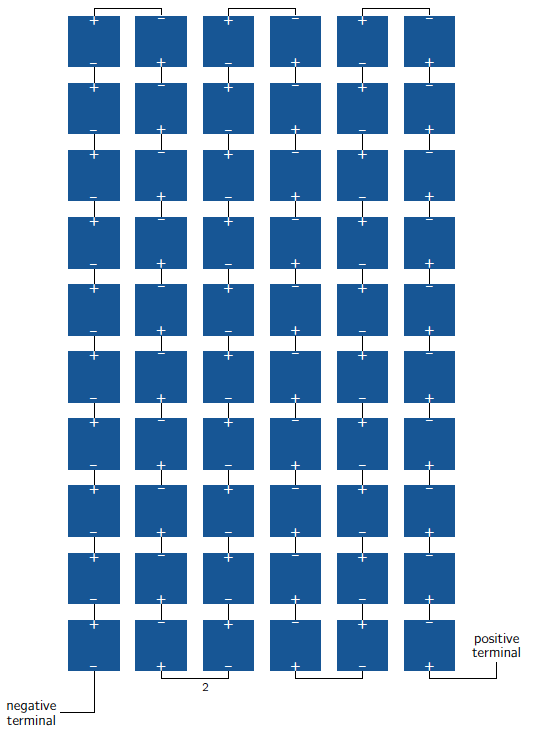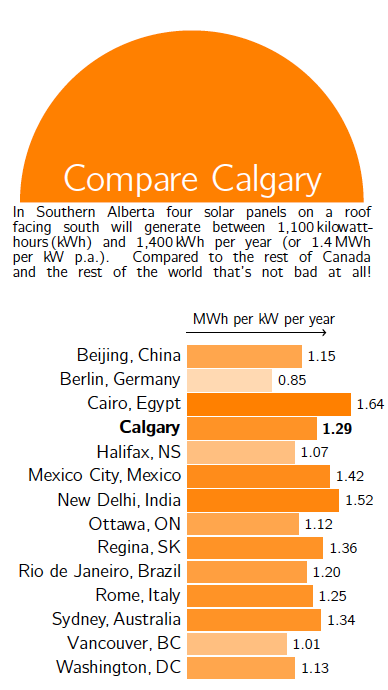
A world class solar potential
Alberta’s combination of cold temperatures and lots of sunlight gives it a world class solar potential for solar photovoltaic system. A solar PV system installed in Calgary can generate more electrical energy than if it were in Rio or Rome! If you compare Calgary’s output to some of the hotter climates shown below you may think that the difference in potential doesn’t totally reflect the difference in sunlight. This is because solar PV cells as semiconductors perform better in lower temperatures.
A solar photovoltaic module contains 60 solar cells that are electrically connected in series. Four 60-cell solar modules facing south in Southern Alberta will generate between 1,100 kilowatt-hours (kWh) and 1,400 kWh of electrical energy per year depending on where it is located and how it’s oriented. The average Albertan home consumes 7,200kWh per year. Therefore a typical home will need between 5 and 7kW to produce as much energy as it consumes. Click here to read more about grid-tied solar or here to visit the FAQ section.

A standard 60-cell solar module contains 60 solar cells connected in series.
What about solar hot water?
A solar photovoltaic system and a solar hot water system in Alberta will harvest more or less the same amount of solar energy. Both systems will produce most of their energy in the summer and relatively much smaller amount of energy in the winter. However a solar hot water collector produces enough hot water in such a short period of time that much of it goes to waste. Collectors are found to be economically viable servicing large hot water needs such as in swimming pools and laundromats. Solar hot water collectors are mechanical pieces of equipment with moving parts and require more maintenance than solar PV, and in Alberta’s climate most solar hot water designs include a glycol cycle to prevent water freezing.
What about snow?
Although snow has a detrimental effect on output of a solar module, it incurs no more than 6% in loss of total annual output. This is because solar production is concentrated in the summer. Read more about how impacts solar production in Alberta here.

